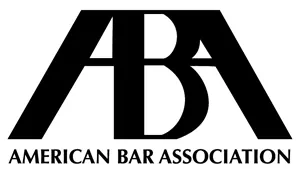ABA Data Highlights Law Schools Below Bar Passage Standards
Western Michigan University’s Thomas M. Cooley Law School had the lowest two-year bar passage rate for 2021 graduates among ABA-accredited law schools, at 55.87%.
Overall, 90.40% of 2021 graduates who sat for a bar exam passed it within two years of graduation, slightly lower than the 91.85% rate for 2020 graduates, the ABA Journal reports.
SEVERAL LAW SCHOOLS FELL BELOW ABA CUTOFF
Cooley Law is one of several law schools that schools fell below the ABA’s 75% two-year ultimate bar pass rate for 2021 law graduates, including University of the District of Columbia David A. Clarke School of Law, Pontifical Catholic University of Puerto Rico School of Law, Inter American University of Puerto Rico School of Law, Western State College of Law, and Southern University Law Center. Cooley, Inter American University, and the Pontifical Catholic University of Puerto Rico were also among the schools that fell below the standard for the class of 2020.
According to Standard 316 of the ABA Standards and Rules of Procedures for Approval of Law Schools, a law school must ensure that at least 75% of its graduates who sit for the bar examination pass within two years.
However, if a school is found to fall below this standard, it has the opportunity to dispute the data. Should the data be confirmed, schools have a two-year window to demonstrate their return to compliance. Additionally, they can request an extension of this period by providing evidence of good cause, as outlined in 2019 guidance.
Cooley previously received an extension in 2022 after it was found to be out of compliance with Standard 316 in 2020, when its ultimate bar passage rate was 66.01%, and again in 2021, when its ultimate bar passage rate was 62.31%.
BAR PASSAGE BY RACE AND ETHNICITY
The ABA also reported on bar pass rates by race and ethnicity, revealing disparities in pass rates among different groups.
The two-year bar pass rate for 2021 law grads was 93% for white grads, 78% for Black grads, 86% for Hispanic grads, 90% for Asian grads, 82% for Native American grads, 66% for Hawaiian grads, and 91% for U.S. nonresidents.
Sources: ABA Journal, ABA Journal
Next Page: Strategies for High Schoolers Thinking About Law School


Questions about this article? Email us or leave a comment below.